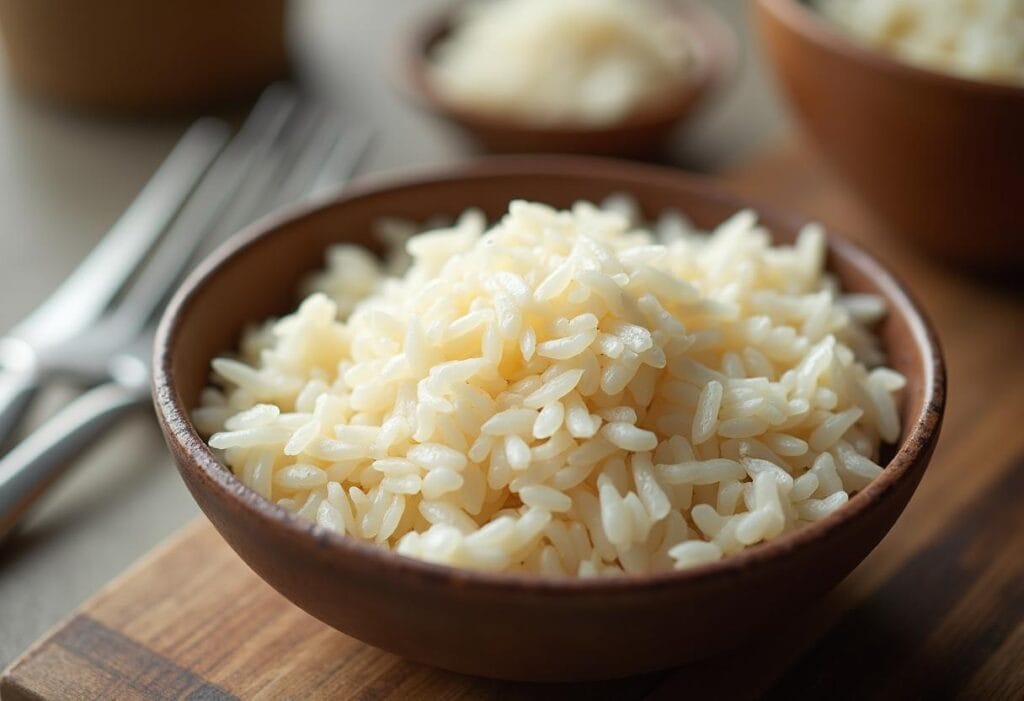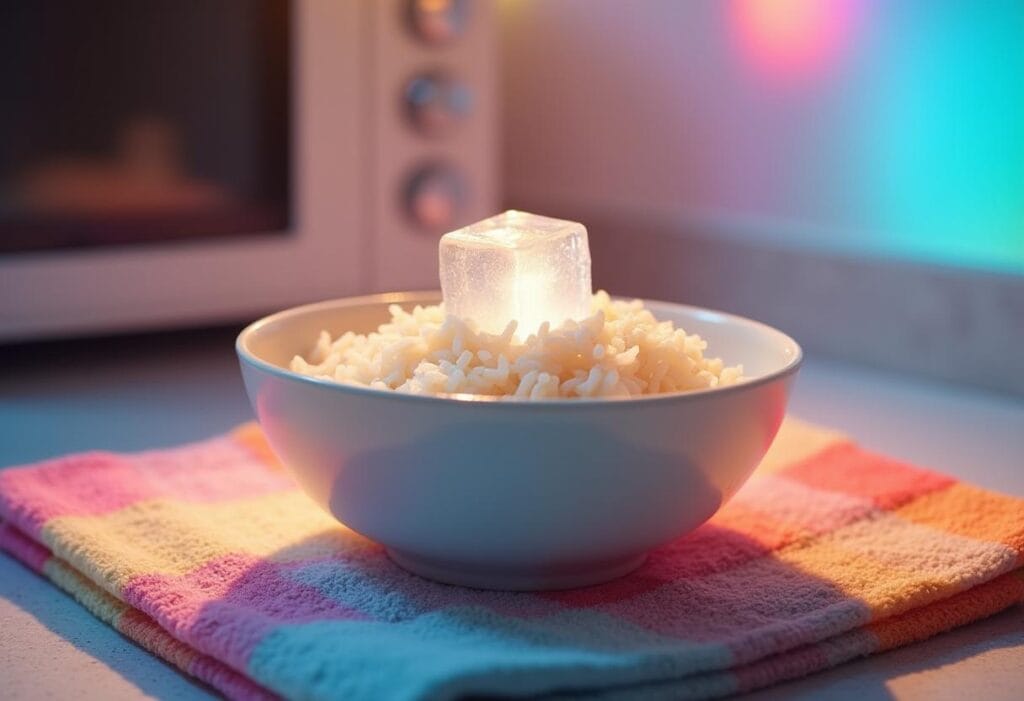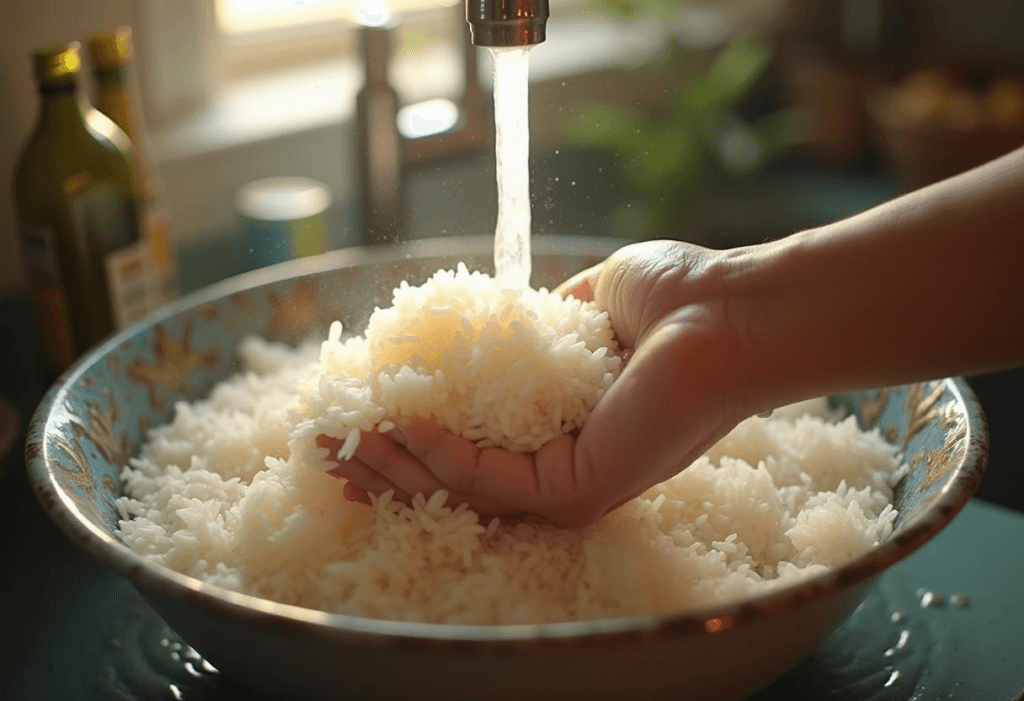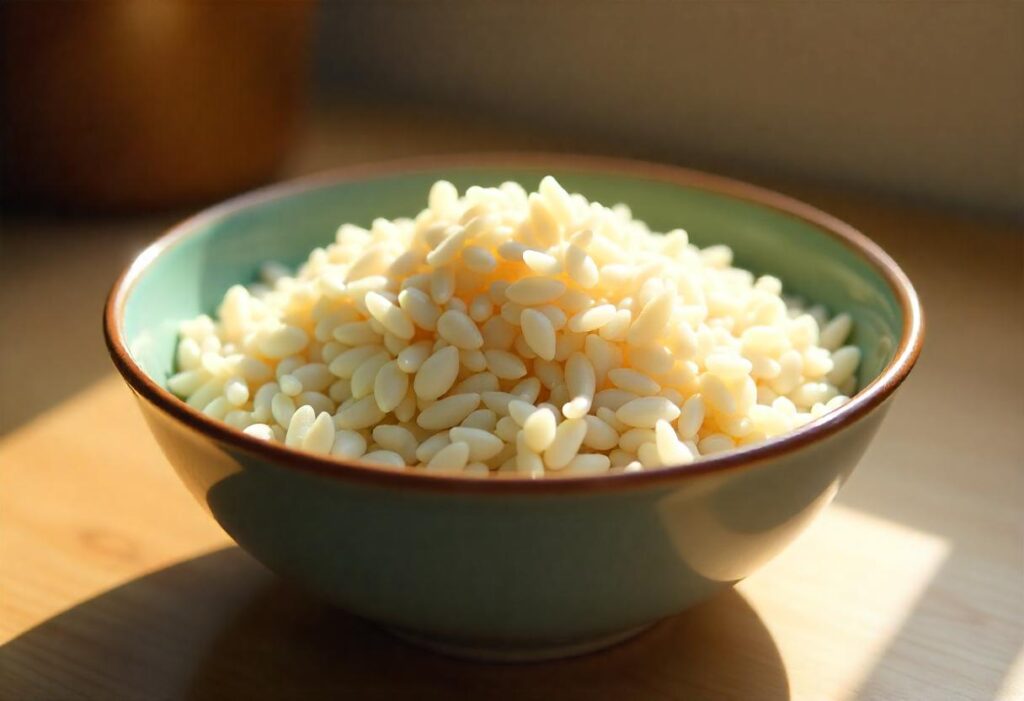Does the Rice Hack Really Work?
Many people wonder: Does the rice hack really work? Cooking rice should be simple, but without the right techniques, it often turns out mushy, dry, or uneven
The internet is filled with « rice hacks » that promise perfect results—but do they actually work?
In this article, we’ll put these rice hacks to the test, explore their effectiveness, and see whether they truly improve texture and taste. Plus, we’ll compare them to tried-and-true rice cooking techniques like the 5 5 5 rule for rice and professional chef recommendations.
Does the Rice Hack Really Work? Why Are People Obsessed with Rice Hacks?
Let’s be honest—everyone loves a shortcut in the kitchen. If a simple trick can save time and effort while delivering perfect rice, why wouldn’t you try it? Here are a few reasons why people swear by rice hacks:
- Convenience: Some hacks promise to fix rice mistakes without starting over.
- Consistency: Getting the water-to-rice ratio right every time sounds like a dream.
- Curiosity: Many hacks go viral, making people eager to test them out.
- Kitchen Science: Some hacks have scientific backing, making them sound legit.
But just because something is popular doesn’t mean it works. So, let’s break down what rice hacks claim to do and whether they actually deliver results.
The Promise: What Rice Hacks Claim to Do
Before testing any hack, it’s essential to understand what each trick claims to achieve. Here are some of the most famous rice hacks and what they promise:
| Hack Name | Claimed Benefit |
|---|---|
| Ice Cube Hack | Revives dry, leftover rice when reheating. |
| Oil & Vinegar Trick | Prevents rice from sticking together. |
| Rinsing Before Cooking | Removes excess starch for fluffier grains. |
| Finger Water Method | Measures the perfect water-to-rice ratio. |
| Towel Steaming Trick | Absorbs excess moisture for better texture. |
Sounds promising, right? But before we start testing, let’s first look at why cooking rice is so tricky in the first place.
Common Rice Cooking Problems (And Why Hacks Are Needed)
Cooking rice isn’t as easy as “boil and serve.” There are several ways it can go wrong, leaving you with a disappointing meal. Here are the most common rice-related disasters and why they happen:

1. Mushy, Sticky, or Gummy Rice
Ever ended up with a clumpy mess instead of fluffy rice? This usually happens because:
- Too much starch wasn’t rinsed off before cooking.
- Excess water was used, causing the grains to absorb more than necessary.
- The rice was stirred too much, breaking the grains.
🔹 Potential Hack Fix: Rinsing rice thoroughly before cooking can help reduce stickiness.
2. Undercooked, Crunchy Rice
If your rice is still hard in the center, there’s a good chance that:
- You didn’t use enough water.
- The heat was too high, evaporating the water too quickly.
- The rice wasn’t covered properly, preventing proper steaming.
🔹 Potential Hack Fix: The Finger Water Method claims to solve this issue by using your knuckle as a measuring guide instead of cups.
3. Rice Sticking to the Pot
Nothing is worse than scraping burnt rice off the bottom of a pan. If this happens often, it’s because:
- The heat was too high, causing burning before the rice fully cooked.
- The rice wasn’t stirred before simmering, leading to uneven cooking.
- Not enough oil or fat was used.
🔹 Potential Hack Fix: The Oil & Vinegar Trick suggests adding a teaspoon of oil or vinegar while cooking to prevent sticking.
4. Bland, Flavorless Rice
Rice should be delicious, not just a plain side dish. If your rice tastes like cardboard, it’s because:
- You used only water instead of broth or seasonings.
- The rice wasn’t toasted before adding liquid.
- You forgot to add aromatics like garlic, onion, or herbs.
🔹 Potential Hack Fix: Cooking rice in broth instead of water is a simple way to enhance flavor.
Does the Rice Hack Really Work? Testing Popular Rice Hacks to Find the Truth
Let’s get to the fun part—putting these hacks to the test! I tried these rice tricks in my kitchen to see if they’re game-changers or just myths.
1. Does the Rice Hack Really Work? The Ice Cube Hack (Does It Fix Leftover Rice?)
Hack: Place an ice cube on top of leftover rice before microwaving to add moisture without making it soggy.
Result: This actually works! The steam from the melting ice cube gently reheats rice without drying it out.
Downside: If you use too much ice, the rice can turn mushy.

2. The Coconut Oil Hack (Does It Reduce Calories?)
Hack: Adding 1 teaspoon of coconut oil to cooking water and refrigerating rice for 12 hours supposedly reduces calorie absorption.
Result: Studies suggest this can increase resistant starch, which lowers calorie intake—making this a useful hack if you want to cook rice to lose weight.
Downside: The texture becomes firmer, which some people may not enjoy.
3. Rinsing & Soaking Rice (Does It Prevent Stickiness?)
Hack: Rinse rice 3-4 times and soak for 30 minutes to remove extra starch.
Result: Highly effective! This is a traditional technique that prevents clumping and enhances texture.
Pro Tip: Check out the ultimate rice hack recipe for more tricks to improve rice texture!

How Do These Rice Hacks Compare to Traditional Methods?
Rice hacks can sometimes work, but are they better than tried-and-true cooking methods? Let’s compare them.
| Method | Pros | Cons |
|---|---|---|
| 5 5 5 Rule | Fast, consistent results | Requires a pressure cooker |
| Rice Cooker | Hands-free cooking | Takes longer |
| Absorption Method | Simple, traditional | Requires close attention |
| Rice Hacks | Fun and creative | Some don’t work consistently |
For consistently great rice, the 5 5 5 rule for rice remains one of the most reliable methods.
Expert Tips to Improve Rice Without Gimmicks
Want flavorful, fluffy rice without relying on hacks? Try these expert-approved techniques:
1. Cook Rice in Broth Instead of Water
Using chicken, vegetable, or beef broth instead of water adds richness and pairs well with any dish.
Learn more: What can I add to rice to make it tasty?
2. Toast Your Rice Before Cooking
Lightly toast dry rice in a pan with olive oil or butter before adding water. This enhances the nutty aroma and improves texture.
Great for: Basmati, jasmine, and wild rice.
3. Use the Right Water Ratio
The wrong water-to-rice ratio is the #1 reason rice turns out badly. Follow these guidelines:
| Rice Type | Water-to-Rice Ratio |
|---|---|
| White Rice | 1:1 |
| Brown Rice | 1.25:1 |
| Jasmine Rice | 1:1 |
| Basmati Rice | 1:1 |
Want a foolproof method? Try the ultimate rice hack recipe!
The Finger Water Method – Can Your Knuckle Measure Water?
Claim: Instead of measuring cups, you can use your finger’s first knuckle to determine the perfect water-to-rice ratio.
Testing the Hack:
- Added 1 cup of rice to a pot without measuring water.
- Placed my index finger flat on the rice and added water until it reached my first knuckle.
- Cooked the rice without making any other adjustments.
- Compared results with a batch using the standard 1:2 ratio (1 cup rice, 2 cups water).
Result: Surprisingly, this worked really well! The rice was fluffy and well-cooked, almost identical to the measured batch. The method is especially helpful if you’re cooking different amounts of rice and don’t want to fuss with measuring cups.
💡 Verdict: A solid alternative to measuring cups!
« The knuckle method may not be scientifically exact, but it’s surprisingly reliable—especially for quick home cooking! »
The Towel Steaming Trick – Does It Improve Texture?
Claim: Placing a clean kitchen towel between the pot and the lid absorbs excess steam, resulting in fluffier rice.
Testing the Hack:
- Cooked two batches of rice—one with the towel trick, one without.
- Placed a thin towel over the pot before putting the lid on.
- Let the rice rest for 10 minutes before fluffing.
Result: The rice cooked with the towel was noticeably fluffier! The towel absorbed excess condensation, preventing water from dripping back into the rice and making it soggy.
Verdict: This hack actually works and is worth trying!
« Think of this like using a towel to dry off after a shower—it absorbs extra moisture, leaving the rice perfectly fluffy! »
Can You Save Overcooked or Undercooked Rice?
Sometimes, even with the best efforts, rice can turn out too mushy or too hard. But don’t worry—there are simple fixes to rescue your rice!
Fixing Mushy Rice (Overcooked & Watery)
If your rice turns into a sticky mess, try this:
1️⃣ Spread it out on a baking sheet and place it in a preheated oven (350°F) for 5-10 minutes. This dries out excess moisture.
2️⃣ If only slightly overcooked, remove the lid and let the rice sit uncovered for a few minutes to let extra steam escape.
« Mushy rice is like wet socks—sometimes, you just need to air it out! »
Fixing Undercooked Rice (Too Hard)
If your rice is still crunchy, follow these steps:
1️⃣ Add ¼ cup of water, cover, and let it steam on low heat for 5 minutes.
2️⃣ If still hard, turn off the heat and let it sit covered for 10 more minutes—this helps the grains absorb steam.
« Undercooked rice is like a dry sponge—it just needs more time to soak up moisture! »
Scientific Breakdown: What Actually Affects Rice Texture?
We’ve tested multiple rice hacks, but what actually makes rice cook perfectly? Here’s what science says:
1. The Role of Starch in Rice Stickiness
Rice contains amylose and amylopectin, two types of starch that determine how sticky it becomes.
- High-amylose rice (e.g., basmati) stays fluffy and separate.
- High-amylopectin rice (e.g., sushi rice) is naturally sticky.
🔹 This is why rinsing helps—washing removes excess starch, preventing stickiness!
2. Water Ratios & Cooking Methods
Too much water = mushy rice.
Too little water = hard, undercooked rice.
This is why the Finger Water Method works—it provides a consistent but flexible way to measure water.
3. Temperature & Cooking Time
Cooking rice too fast = uneven texture.
Cooking rice too slow = mushy texture.
« Perfect rice is all about balance—right starch levels, correct water ratios, and proper cooking time! »
Most Common Rice Cooking Mistakes & Solutions
| Mistake | Why It Happens | How to Fix It |
|---|---|---|
| Mushy rice | Too much water or overcooking | Bake in oven or let steam escape |
| Crunchy rice | Not enough water or not steaming long enough | Add more water and let it sit |
| Burnt rice | Heat too high or not enough stirring | Lower heat and use a non-stick pot |
| Sticky rice | Too much starch or improper rinsing | Rinse thoroughly before cooking |
| Flavorless rice | No seasoning or broth used | Cook with broth, aromatics, or spices |
Do You Really Need Rice Hacks? (Final Verdict)
After testing multiple hacks, here’s what we found:
Rice Hacks That Work & Are Worth Using:
- Rinsing Before Cooking – Essential for fluffier rice.
- Ice Cube Hack – Revives leftover rice like magic.
- Finger Water Method – A simple, effective way to measure water.
- Towel Steaming Trick – Helps with perfect texture.
Rice Hacks That Are Overhyped:
- Oil & Vinegar Trick – Only slightly reduces stickiness, but rinsing is better.
- Adding Salt to Stop Stickiness – Doesn’t make a noticeable difference.
« Rice hacks are like kitchen magic—some work wonders, while others are just smoke and mirrors! »

Conclusion: Does the Rice Hack Really Work? The Truth About Rice Hacks
So, does the rice hack really work? Yes and no! Some rice hacks are genuinely useful and make a difference, while others are just kitchen myths.
If you want consistently perfect rice, focus on the fundamentals:
Rinse your rice before cooking.
Use the right water-to-rice ratio (Finger Method works well).
Let the rice rest after cooking for the best texture.
Steam with a towel for fluffier grains.
At the end of the day, cooking great rice isn’t about shortcuts—it’s about understanding the process. But hey, if a little trick helps, why not use it? Now that you know which rice hacks actually work, which one will you try first? Let me know!

